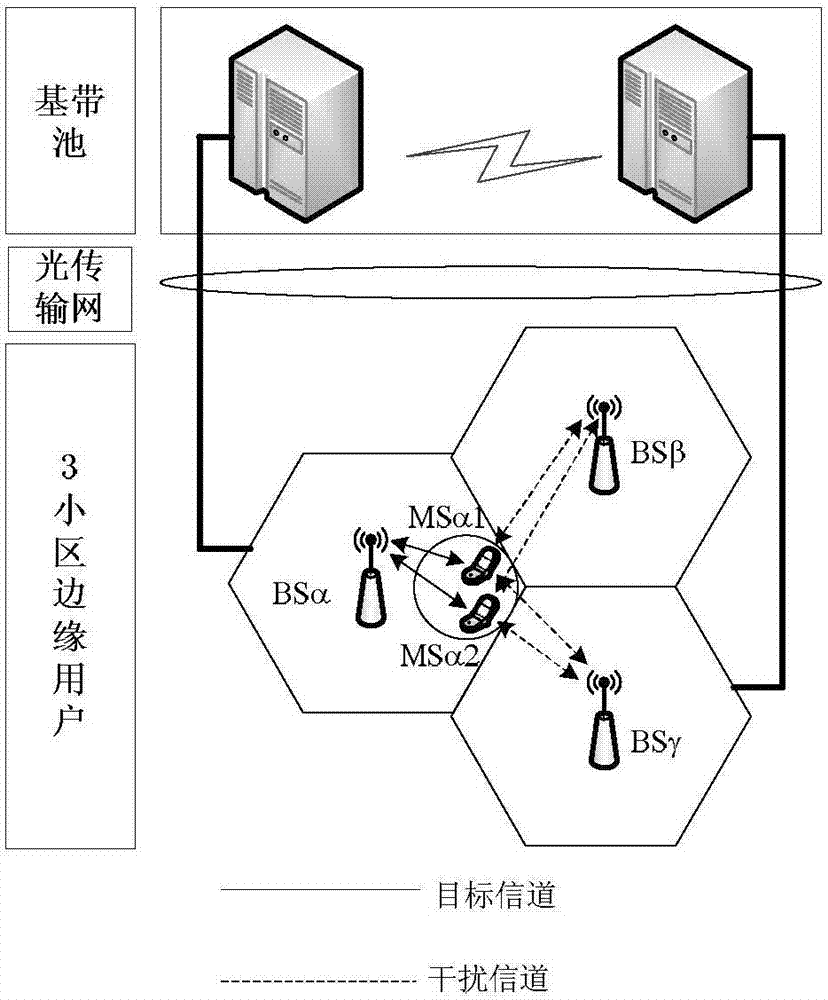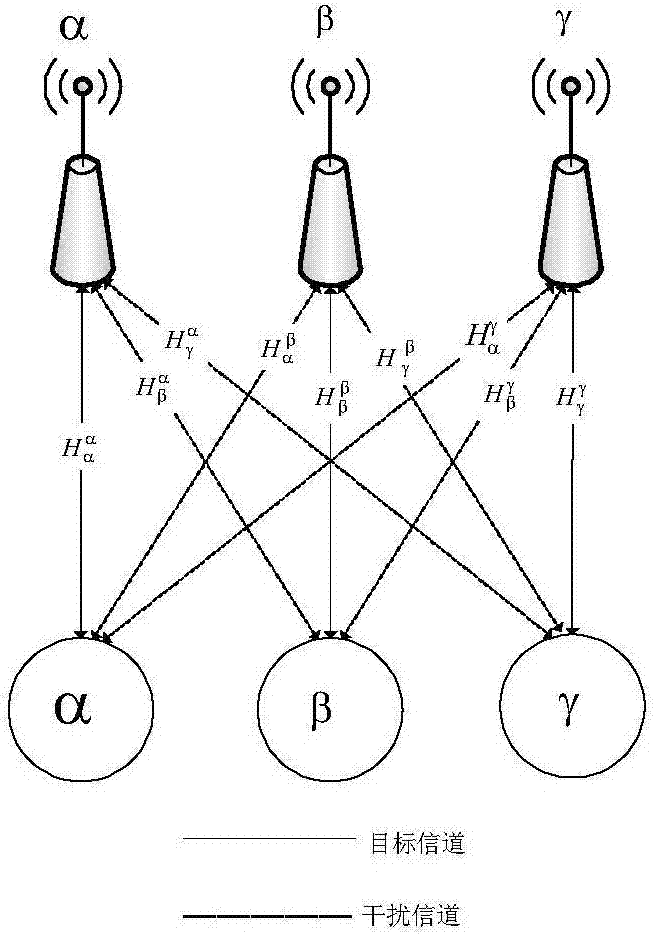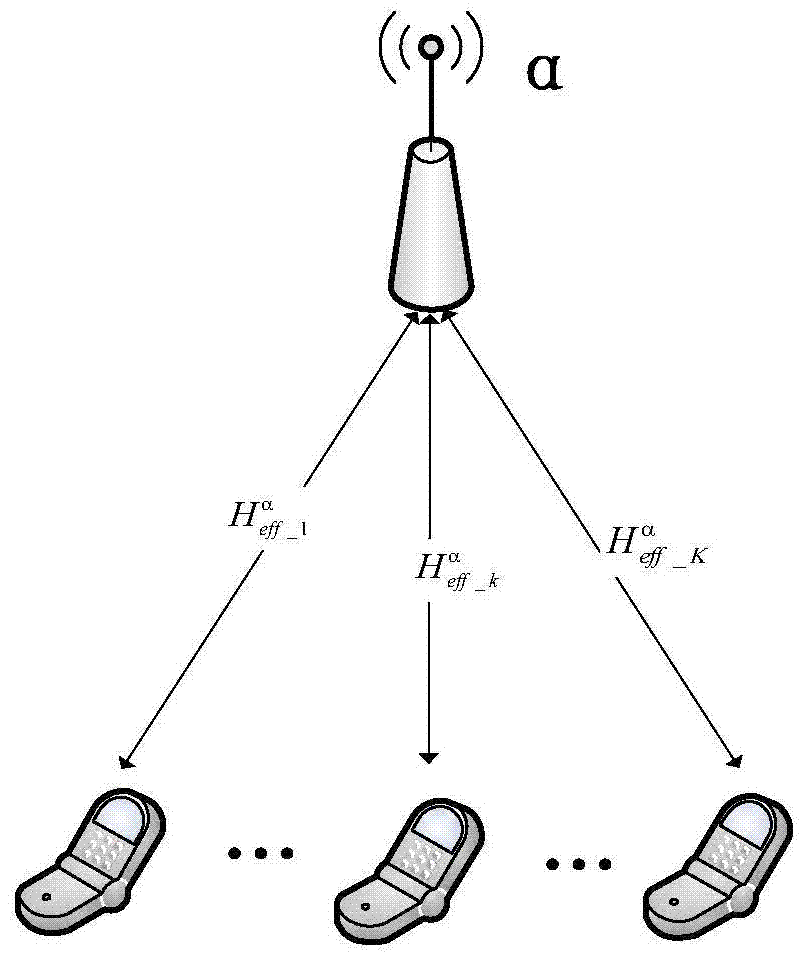A method for eliminating interference of edge users in a multi-cell system under the c-ran architecture
An edge user and multi-cell technology, applied in diversity/multi-antenna systems, transmission systems, radio transmission systems, etc., can solve problems such as the difficulty of applying massive MIMO technology, and achieve the effect of eliminating inter-group interference and reducing complexity
- Summary
- Abstract
- Description
- Claims
- Application Information
AI Technical Summary
Problems solved by technology
Method used
Image
Examples
Embodiment Construction
[0040] Below in conjunction with accompanying drawing, the present invention will be further described:
[0041] figure 1Under the C-RAN architecture, the interference model of the edge user of the multi-cell system is as follows: figure 1 As shown, the base station of each cell is connected to the baseband pool through the optical transmission network, and the baseband pool centrally processes the information sent from each base station, thus realizing the sharing of channel edge information. Assume that there is only one user group at each cell edge, and the channel covariance matrix of each user in the group is the same, so that each user will not only be interfered by users in the group, but also be interfered by users in different cell groups.
[0042] In order to facilitate the analysis of inter-group interference, the internal situation of the cell is ignored, and the system model is transformed into figure 2 The two-way interfering channel model is shown. Assuming ...
PUM
 Login to View More
Login to View More Abstract
Description
Claims
Application Information
 Login to View More
Login to View More - R&D
- Intellectual Property
- Life Sciences
- Materials
- Tech Scout
- Unparalleled Data Quality
- Higher Quality Content
- 60% Fewer Hallucinations
Browse by: Latest US Patents, China's latest patents, Technical Efficacy Thesaurus, Application Domain, Technology Topic, Popular Technical Reports.
© 2025 PatSnap. All rights reserved.Legal|Privacy policy|Modern Slavery Act Transparency Statement|Sitemap|About US| Contact US: help@patsnap.com



